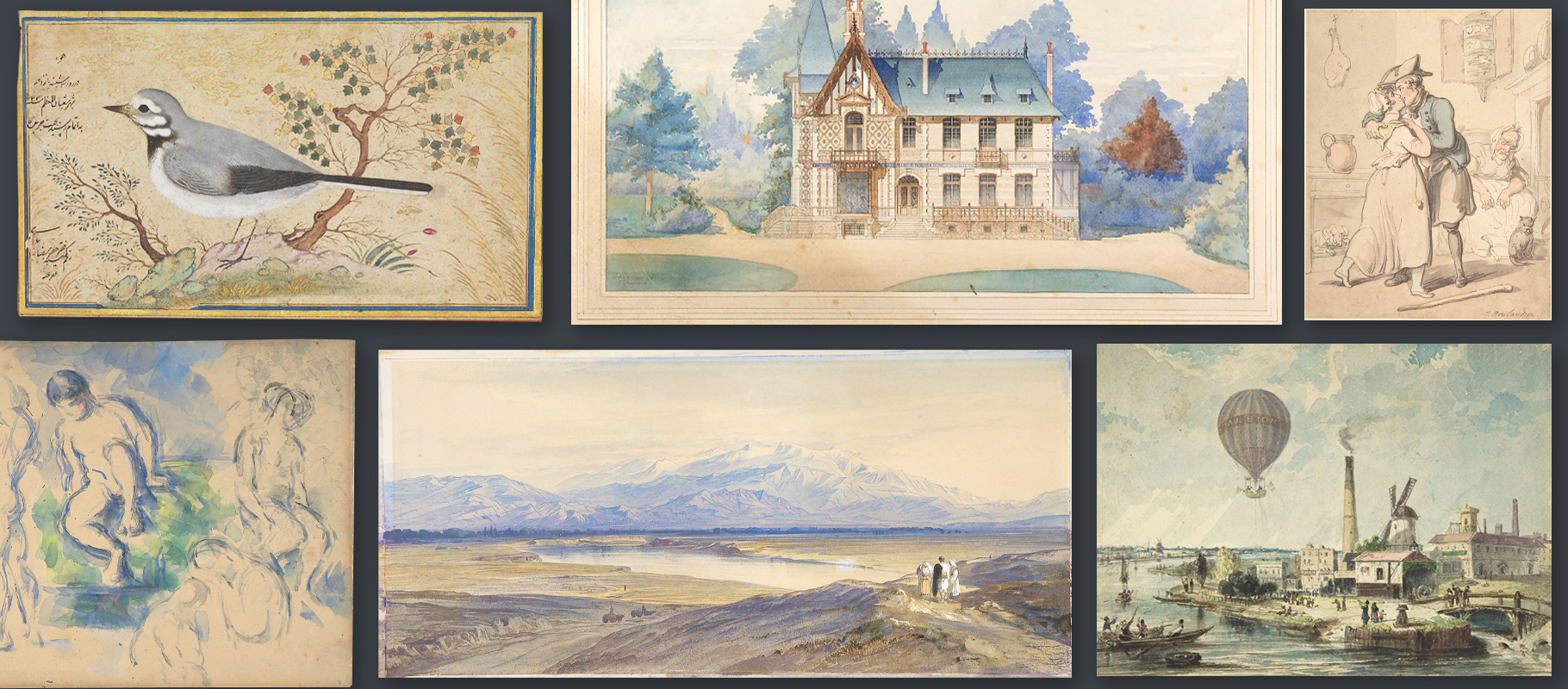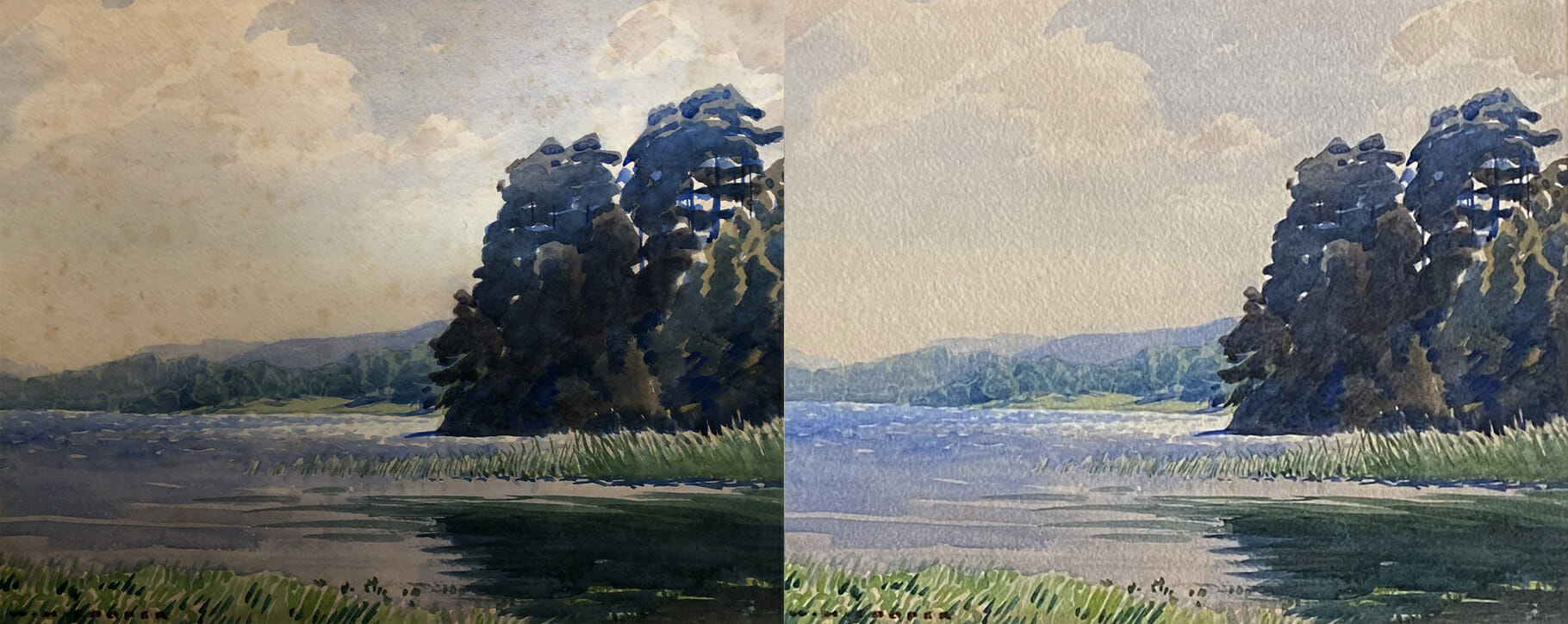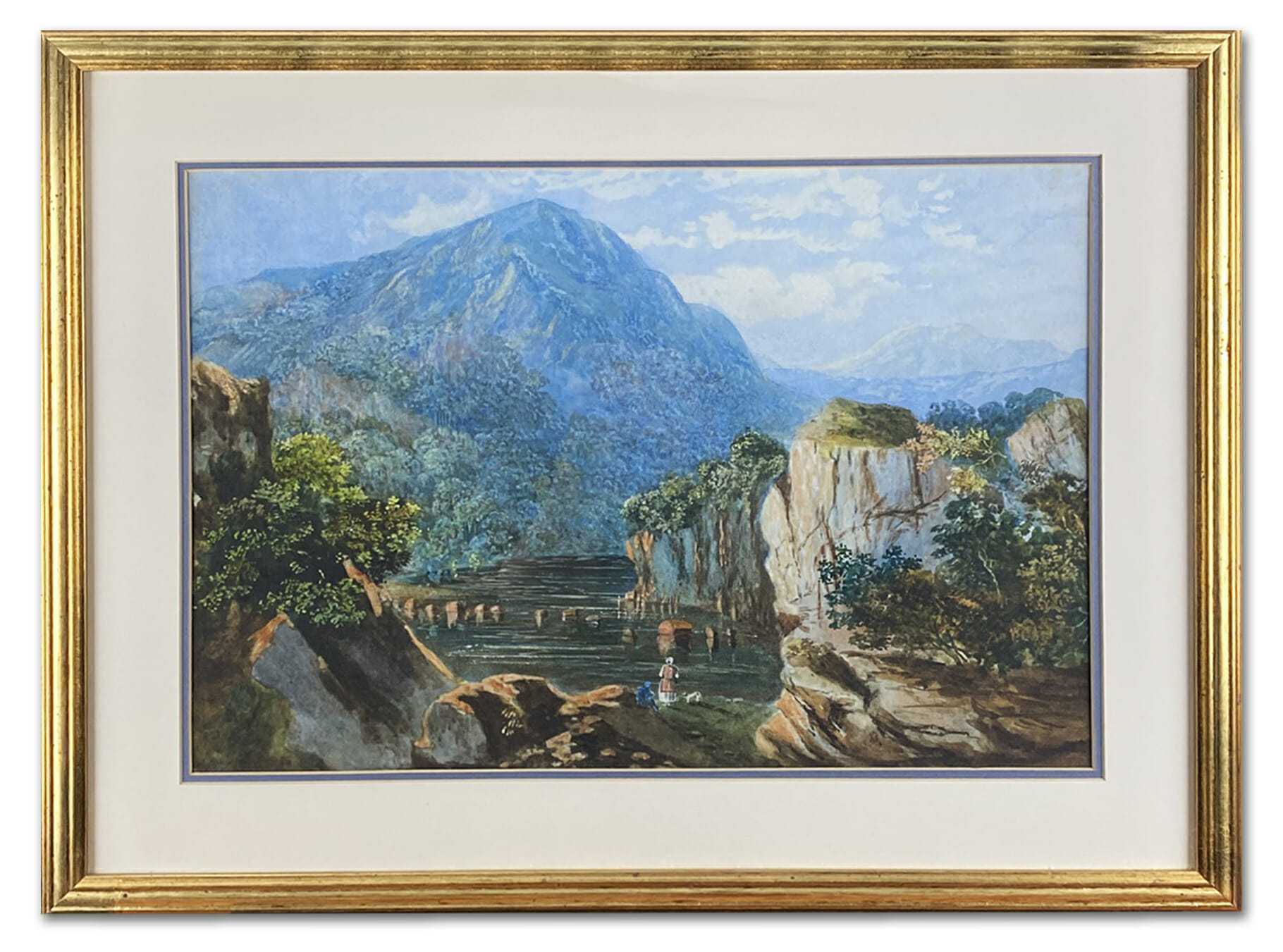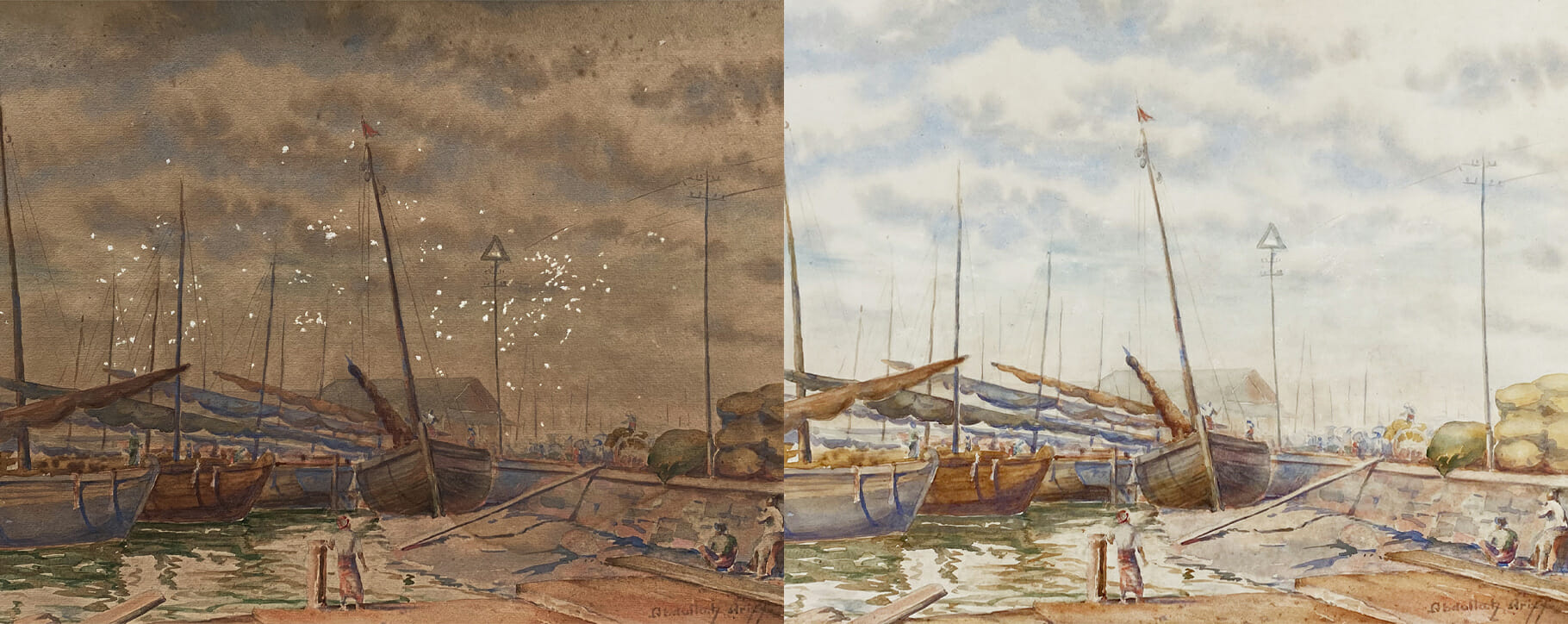Like many works on paper, watercolours are very sensitive to a multitude of environmental changes and accidental damages. Due to their delicate materials, watercolour paintings require specialist care when it comes to their preservation, whether they require a full restoration or protective framing.

This article will cover some of the most frequent reasons for watercolour painting restoration.
Foxing
Watercolours often suffer from an issue that is characteristic of historic paper. Dark red or brown spots may appear on artwork, these are known as foxing.

Foxing is caused by a type of bacteria or mould that grows on especially acidic paper. When the paper reaches a certain level of acidity due to its ageing materials and combines with high humidity, the impurities and mould to thrive and the reddish stains then appear, spreading across the surface over time.

Foxing can be treated by utilising specific conservation treatments. Our paper conservator can gently ‘wash’ the paper and remove foxing spots, as well as some of the acids that encourage it, whilst retaining the original colours of the artwork. The removal of foxing does not damage the artwork, as only the unoriginal organic substances are removed in this process.

Paper discolouration and acid staining
Over time, an old mount board and other framing materials may cause acidic discolouration to paper. This is due to acids in the backing board or surrounding card contaminating the artwork. Staining due to acidic framing materials shows up as a brown or darkening surface, sometimes only in the areas that touch the mount or have contact with historic glues and sticky tape.

When our paper conservator comes across an acid stained watercolour, he is able to sensitively remove this contamination whilst retaining the original colours of the painting. This is due to the chemistry of his conservation techniques, the watercolour can be gently ‘washed’ in a solution that is tailored to remove certain substances whilst retaining the artwork’s pigments. This does not damage the original materials, but does allow the watercolour painting to be put back on display free of any damaging acidic elements.

Following this type of restoration work, our team can provide conservation appropriate framing. This includes mount options low in acidity, so they will not discolour or disturb your artwork as low cost framing materials can. All of our mount options and frames are bespoke and can be chosen from a variety of options to suit the era or your own interior. We also offer washlines to enhance the colours of the artwork and UV protective glass to avoid sunlight-induced fading.

Mould growth
Mould spores can also begin to grow on paper when it is affected by moisture, water damage or high humidity. This can be extremely damaging to watercolours, so a rapid response is always recommended to stop the issue before it disturbs the painting further. Our conservators can kill the active spores before removing them with sensitive solutions.

Fading
One of the most dangerous environmental issues facing watercolours is their sensitivity to UV rays. Even a slight exposure to sunlight over time can irreversibly fade the colours of your painting. Whilst our conservator cannot reinstate faded colour, we can provide UV protective glazing for frames, as well as advice on how to prevent further issues.

You can choose from UV protective glass or museum glass for maximum protection. However, even with UV reducing glazing in place, we still recommend that any valuable watercolour is kept out of direct sunlight.
Tears
Paper can be easily torn whether this is through an accident when handling, a household disaster, or due to environmental factors as the fibres expand and contract within a tight mount. Watercolours may have also been folded or rolled in the past, causing weakness along certain areas.

Our paper conservator can resolve tears by using a mixture of liquid paper pulp and Japanese tissue paper. On a microscopic level, the torn fibres can be ‘stitched’ back together with the new pulp and colour-matched so as not to cause a visual disturbance. The Japanese tissue paper is used as a lining, adding extra strength to the paper following treatment without the use of any acidic adhesives.

How can we help?
If you have a watercolour painting that requires specialist care, please contact our helpful team who will be happy to help further.
You can call us on 01228 521 231 or email [email protected]






